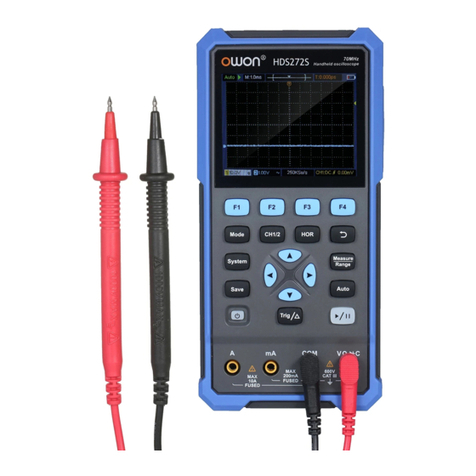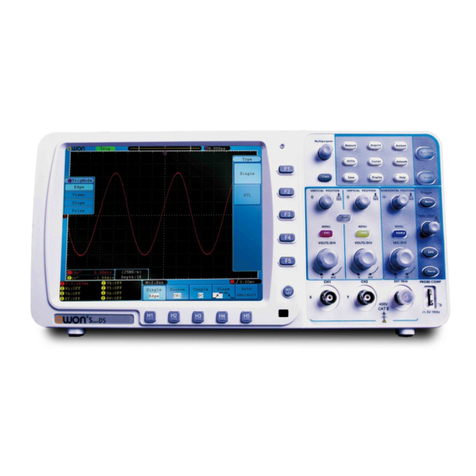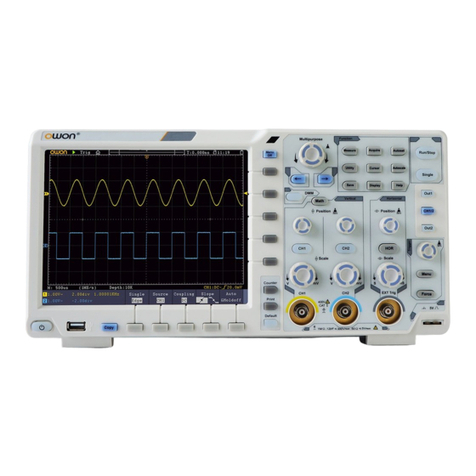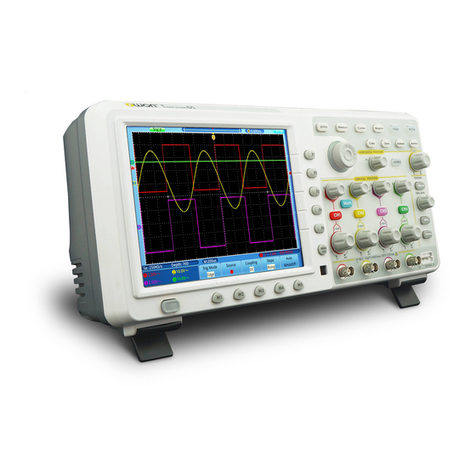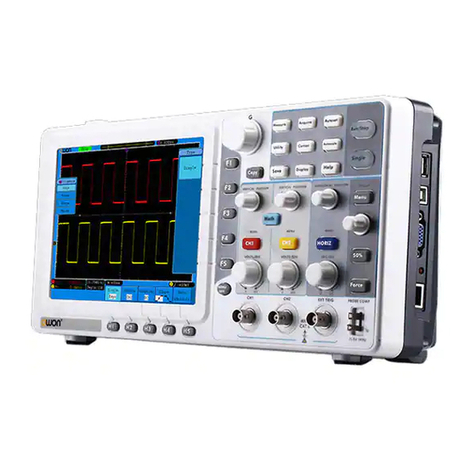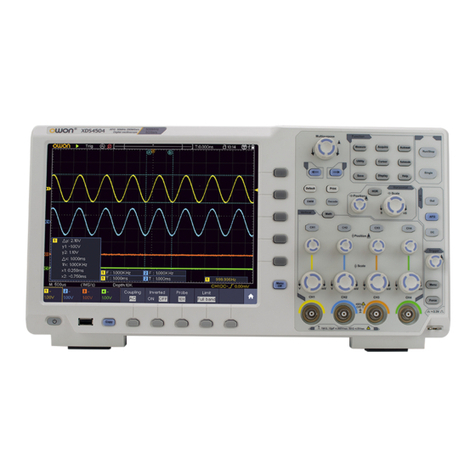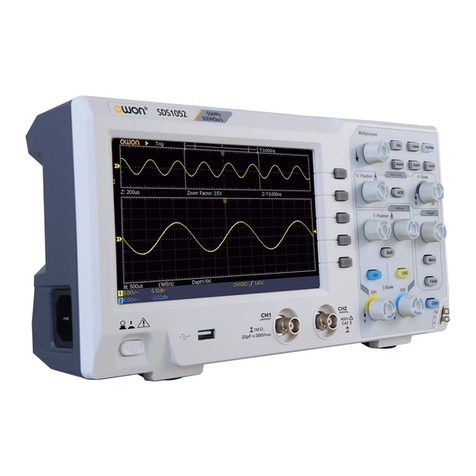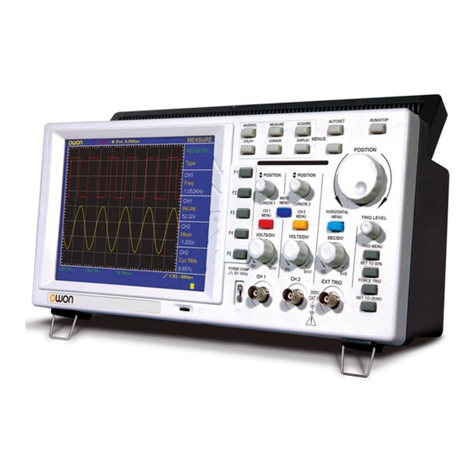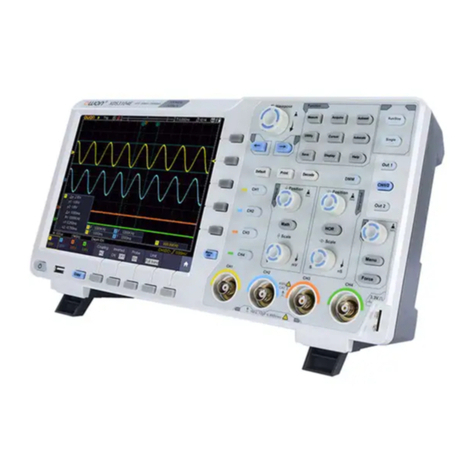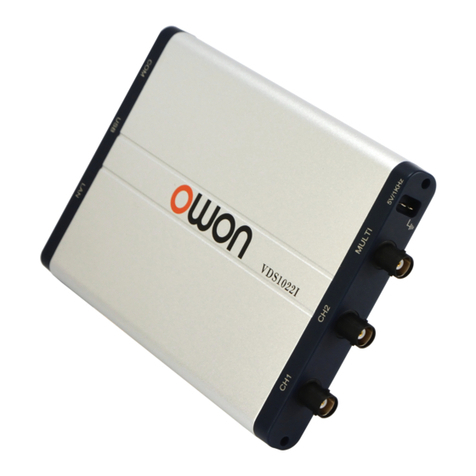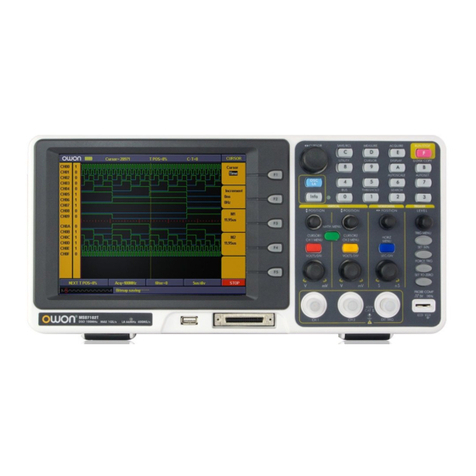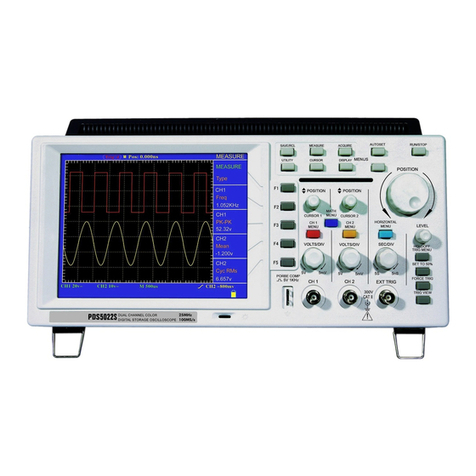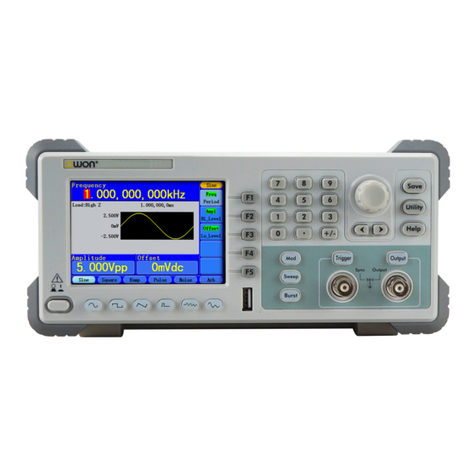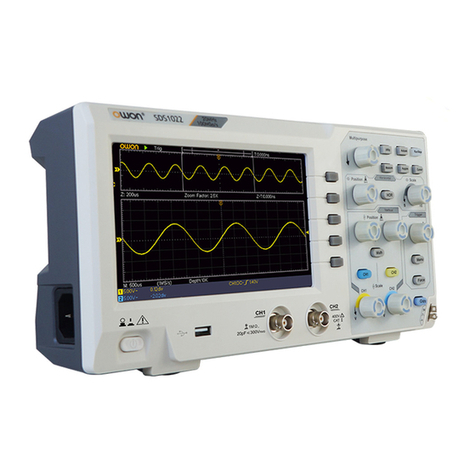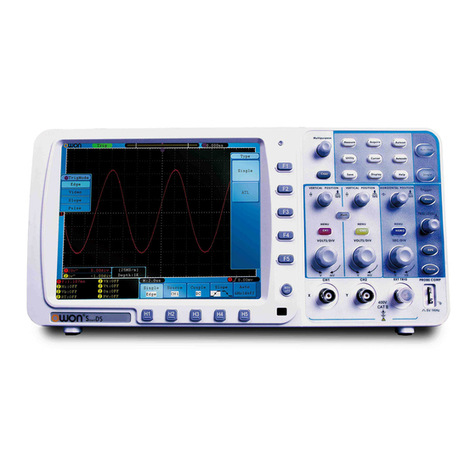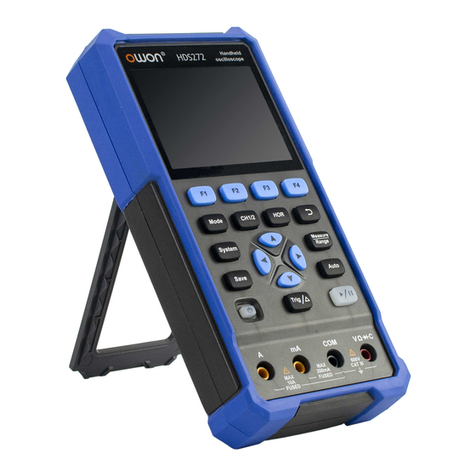
LIMITED WARRANTY & LIMITATION OF LIABILITY
Each Owon product is warranted to be free from defects in material and workmanship under
normal use and service. The warranty period of oscilloscope is three years and the warranty period
of accessories is one year, and begins on the date of shipment. Parts, product repairs and services
are warranted for 90 days. This warranty only apply to the original buyer or customers of a Owon
authorized dealer, and does not apply to fuses, disposable batteries or to any product which, in
Owon’s opinion, has been misused, altered, neglected or damaged by accident or abnormal
conditions of operation or handling. Owon warrants that software will operate substantially in
accordance with its functional specifications for 90 days and that it has been properly recorded on
non-defective media. Owon does not warrant that software will be error free or operate without
interruption.
Owon authorized dealer shall extend this warranty on new and unused products to end-user
customers only but have no authority to extend a greater or different warranty on behalf of Owon.
Warranty support is available if product is purchased through an Owon authorized sales outlet or
Buyer has paid the applicable international price. Owon reserves the right to invoice Buyer for
importation costs of repair/replacement parts when product purchased in one country is submitted
for repair in another country.
Owon’s warranty obligation is limited, at Owon’s option, to refund of the purchase price, free of
charge repair, or replacement of a defective product which is returned to an Owon authorized
service center within the warranty period.
To obtain warranty service, contact your nearest Owon authorized service center or send the
product, with a description of the difficulty, postage and insurance prepaid (FOB Destination), to
the nearest Owon authorized service center. Owon assumes no risk for damage in transit.
Following warranty repair, the product will be returned to Buyer, transportation prepaid (FOB
Destination). If Owon determines that the failure was caused by misuse, alteration, accident or
abnormal condition of operation or handling, Owon will provide an estimate of repair costs and
obtain authorization before commencing the work. Following repair, the product will be returned
to the Buyer transportation prepaid and the Buyer will be billed for the repair and return
transportation charges (FOB Shipping Point).
This warranty is Buyer’s sole and exclusive remedy and is in lieu of all other warranties, express
or implied, including but not limited to any implied warranty of merchantability or fitness for a
particular purpose. Owon shall not be liable for any special, indirect, incidental or consequential
damages or losses, including loss of data, whether arising from breach of warranty or based on
contract, tort reliance or any other theory.
Since some countries or states do not allow limitation of the term of an implied warranty, or
exclusion or limitation of incidental or consequential damages, the limitations and exclusions of
this warranty may not apply to every buyer. If any provision of this Warranty is held invalid or
unenforceable by a court of competent jurisdiction, such holding will not affect the validity or
enforceability of any other provision.
SERVICES CENTER
To locate an authorized services center, visit us on the World Wide Web:
WWW.OWON.COM.CN
